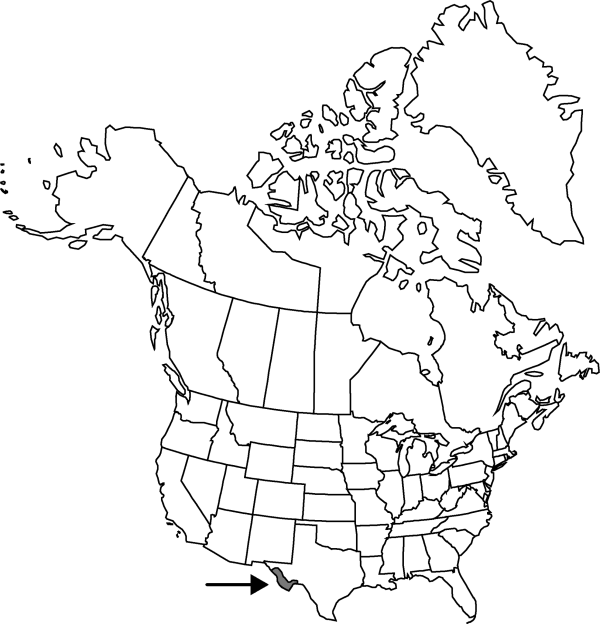Difference between revisions of "Opuntia rufida"
Proc. Amer. Acad. Arts 3: 298. 1856.
FNA>Volume Importer |
imported>Volume Importer |
||
| Line 56: | Line 56: | ||
|publication year=1856 | |publication year=1856 | ||
|special status= | |special status= | ||
| − | |source xml=https:// | + | |source xml=https://bibilujan@bitbucket.org/aafc-mbb/fna-data-curation.git/src/bb6b7e3a7de7d3b7888a1ad48c7fd8f5c722d8d6/coarse_grained_fna_xml/V4/V4_270.xml |
|subfamily=Cactaceae subfam. Opuntioideae | |subfamily=Cactaceae subfam. Opuntioideae | ||
|genus=Opuntia | |genus=Opuntia | ||
Revision as of 00:13, 28 May 2020
Shrubs or trees, with short trunk, many branched, 0.5–1.5 m. Stem segments not disarticulating, grayish green, flattened, reniform, circular, elliptic, or obovate, (7.5–)10–18(–25) × 5–25 cm, low tuberculate, pubescent; areoles 8–13 per diagonal row across midstem segment, circular, 3–3.2 mm diam.; wool white to tan, aging gray. Spines absent. Glochids numerous, nearly filling areole, red-brown to white, 1–2.5 mm. Flowers: inner tepals yellow throughout, aging apricot to orange, obovate-apiculate, 25–38 mm; filaments whitish; anthers yellow; style green; stigma lobes dark green. Fruits red with green flesh, obovate, 20–35 × 15–23 mm, fleshy, short pubescent, spineless; umbilicus 5–7 mm deep; areoles (30–)36–52. Seeds yellowish, elliptic to subcircular, angular, 3–3.5 × 2.5–2.8 mm, thick, sides smooth or with 1–2 depressions; girdle protruding about 0.3 mm. 2n = 22.
Phenology: Flowering spring (Mar–Apr).
Habitat: Calcareous to volcanic flats, hillsides, sandy to gravelly desert soils
Elevation: 600-1300 m
Distribution

Tex., Mexico (Chihuahua, Coahuila, Durango).
Discussion
Opuntia rufida hybridizes in Mexico with O. microdasys.
The vernacular name is derived from the tendency for the glochids to shed into the eyes of grazing cattle that bump against the plant.
Selected References
None.